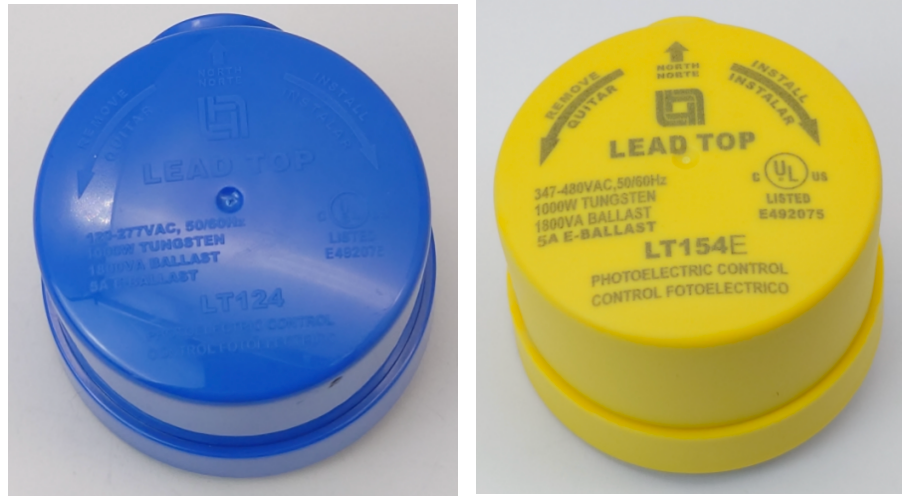I. Introduction: A Case of Tender Failure
- Overview of the South American city’s street lighting tender
- Company X’s disqualification due to non-compliance
Background
In 2023, a city government in South America issued a tender for a large-scale street lighting upgrade, specifying that all photocontrol devices must comply with the international’s Restriction of Hazardous Substances (RoHS) Directive. The project aimed to improve energy efficiency while adhering to strict environmental regulations.
Company X, a well-established supplier with a strong reputation for durable and technically reliable photocontrol products, submitted a bid. Confident in their offering, Company X provided their standard photocontrol devices, which had been in production for over a decade.
The Compliance Oversight
Despite its technical strengths, Company X’s bid was later disqualified during the evaluation phase. Auditors found that the submitted photocontrol devices contained small amounts of mercury, a component that had historically improved device longevity and functionality. However, under the latest RoHS updates, mercury use in electrical components was no longer permissible unless specifically exempted.
Company X had overlooked this regulatory update, assuming that since their products had been widely used in previous government projects, they would continue to qualify. However, the city’s procurement team had reinforced their compliance checks and strictly enforced the new environmental regulations.
Consequences
1.Tender Disqualification:
Company X was immediately removed from the bidding process, losing a multi-million-dollar contract to a competitor whose products were fully RoHS-compliant.
2.Financial Penalty:
The company faced fines for supplying non-compliant electrical components, as the regulatory body determined that their products failed to meet legal environmental standards.
3.Reputational Damage:
Company X’s reliability was questioned, causing hesitation among other potential clients in the region.
Key Lesson
Despite having a proven, stable, and technically mature product, Company X failed due to a lack of regulatory alignment. This case shows that compliance with latest standards matters as much as the quality of the product itself.
II. The Root Cause of Compliance Traps: Mercury’s “Original Sin” and Regulatory Red Lines
- Environmental Hazards of Mercury and Global Bans: Detailed introduction to the environmental and health risks posed by mercury and the increasingly strict global bans, such as the Minamata Convention. This section highlights how these bans have driven stricter regulations, especially regarding its use in electronic products.
- China’s Compliance Progress and Its Impact on the Photocontrol Industry: As international environmental standards tighten, China has made significant efforts to comply with global agreements, particularly in controlling harmful substances in electronic products. This has had a profound impact on the photocontrol industry, especially concerning mercury-containing products.
- Implicit Requirements in Tender Documents: Tender documents increasingly focus on environmental qualifications and mercury-free certifications (such as RoHS), making these mandatory. These are often not explicitly stated in the tender documents but have become “hidden thresholds” for passing the tender.
- Tendering Entities’ “Compliance Anxiety”: With the growing implementation of the “environmental veto” policy in government projects, tendering entities are placing more emphasis on suppliers’ environmental compliance. For example, some public resources trading agencies have already listed mercury-containing products in their negative lists, resulting in the failure of related tenders.
III. Invisible Compliance Traps in Tendering: Common “Traps” and Their Impact
- “Green Traps” in Technical Specifications: In some tender documents, while “eco-friendly materials” are explicitly required, the implicit requirement is often for mercury-free products. If the bidder overlooks this, they could fall into a compliance trap. These issues typically arise from ambiguous wording in tender documents.
- “Post-contract Accountability” in Execution: Even if a tender is successfully won, if the environmental inspection during contract execution fails, the project could face termination or penalties. Mercury-containing photocontrol devices often become a target during the acceptance phase of environmental inspections, leading to disputes and forced termination of cooperation due to non-compliance.
IV. Technical Alternative Solutions: Brass Alloy vs. Mercury-Free Inserts
- Comparison of Brass Alloy and Mercury Inserts: Most photocontrol devices on the market today use brass alloy inserts as a traditional alternative. This section explains how brass alloy not only meets environmental requirements but also offers more stable performance compared to mercury inserts.
- Lead Top’s Custom Solutions:
- Tin-Plated Inserts: Our company has customized tin-plated inserts for South American clients in electronic photocontrol devices (LT104) and thermal photocontrol devices (LT113). Tin-plated inserts offer excellent corrosion resistance and are better suited to humid environments, reducing environmental pollution risks.

- Silver-Plated Inserts: We have also customized silver-plated inserts for photocontrol products for a client in Taiwan. Silver-plated inserts offer superior conductivity and help improve the product’s overall stability and lifespan, especially for tenders requiring higher performance standards.
V. Lead Top’s Compliance Assurance and Customer Services
- Compliance Risk Alerts and Customization Services: As Zhejiang Lead Top, we not only focus on our clients’ custom requirements but also proactively inform them about relevant environmental regulations during the customization process. We pay close attention to elements that may violate international agreements or environmental standards and provide clients with supporting documents and compliance information to ensure smooth project implementation and risk mitigation.
- Protecting Clients’ Interests: While offering customization services, we make sure to inform clients in advance about any potential compliance risks. We provide relevant evidence and information on international agreements to help clients avoid unnecessary issues and ensure the successful progress of their projects.
VI. Conclusion: Moving Towards a Greener and More Compliant Future
- Summary: As environmental regulations become stricter, the photocontrol industry faces increasing compliance challenges. By choosing the right technical alternatives and staying ahead of regulatory requirements, companies can not only avoid compliance traps in tenders but also enhance their market competitiveness. Zhejiang Lead Top is committed to providing products that meet international environmental standards, ensuring that our clients’ tender projects proceed smoothly and comply with relevant regulations.
As environmental regulations tighten, the photocontrol industry faces increasing compliance challenges. By implementing the right technical alternatives and staying ahead of regulatory requirements, companies can not only avoid compliance traps in tenders but also enhance their product competitiveness. Zhejiang Lead Top is committed to providing products that meet international standards, ensuring that our clients’ tender projects proceed smoothly and efficiently. Together, we can move towards a greener and more compliant future.






